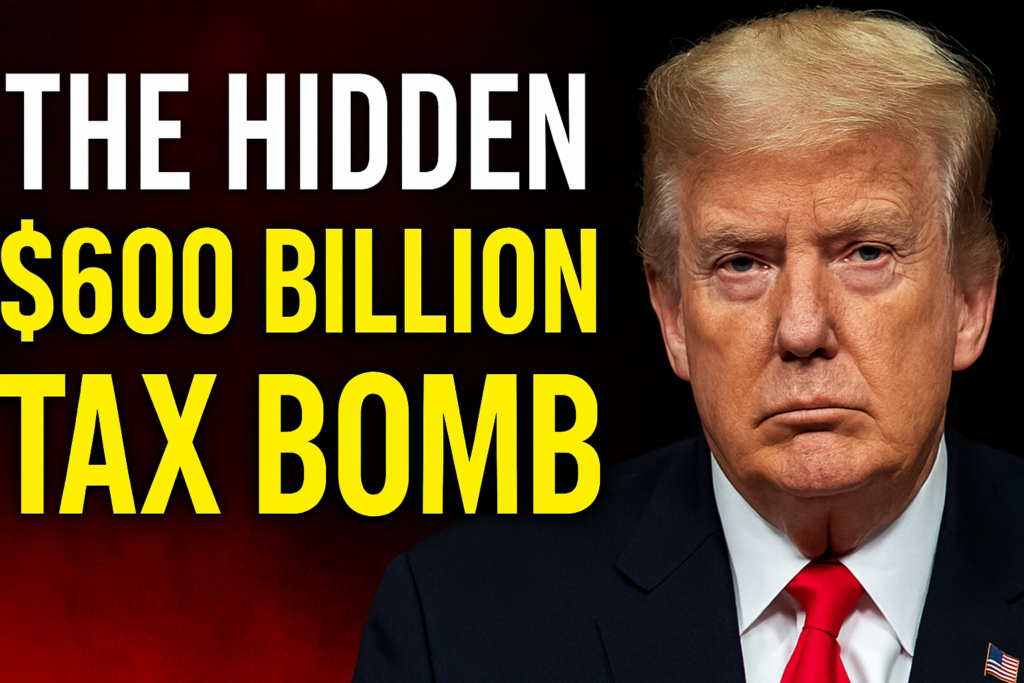Trump to Unveil Largest Tax Increase in World History

A Hidden Tax Bomb, Not Passed—But Imposed
What if the biggest tax hike in U.S. history wasn’t passed by Congress—but snuck in through a tariff? That’s exactly what President Trump is planning, according to economic columnist Matthew Lynn, writing for The Telegraph on March 31, 2025.
Liberation Day: A $600 Billion Fiscal Earthquake
The initiative is called Liberation Day. It’s expected to be unveiled this week, and it could impose tariffs so sweeping that they’d generate an estimated $600 billion a year in revenue. That’s not a side policy—it’s a fiscal earthquake. To put that in perspective, it would exceed all corporate tax revenue in the United States and instantly become the third largest source of federal funding, behind only income taxes and payroll taxes.
Navarro’s Pitch: A Massive Tax Shift Without a Vote
Trump loyalist Peter Navarro pitched the plan on Fox News, saying the goal is to tax imports—particularly foreign cars and manufactured goods—in a way that “brings jobs back.” But Navarro also admitted that the federal government could collect $600 billion a year through this new tariff structure. If that happens, it would amount to a 15% increase in total U.S. tax revenue, without a single act of Congress.
How Trump Can Do This Alone
How is this possible? Because under the Trade Expansion Act of 1962 and Section 301 of the Trade Act of 1974, the president has unilateral authority to impose tariffs. That means this $600 billion tax could materialize without a single Congressional vote. It’s a stunning shift in the structure of American taxation—executive fiat replacing legislative deliberation.
The Real Cost: You Pay, Not China
And despite the patriotic branding, the true cost will land on consumers, not foreign governments.
For illustration: a working-class family in Indiana earning $48,000 per year may already be spending nearly 20% of their income on imported necessities—from electronics to appliances to school supplies. If tariffs add even 10% to those costs, their effective purchasing power could shrink by thousands.
[Hypothetical illustration based on Bureau of Labor Statistics consumer expenditure data.]
A Stealth Tax Masquerading as Trade Policy
This isn’t a trade policy. It’s a stealth tax detonation wrapped in a flag. And if enacted without offsetting tax cuts, it will bleed American wallets slowly and silently—like a leak beneath the floorboards.
The Illusion of Reshoring—And the Cost of Protectionism
Supporters argue that tariffs might encourage U.S. manufacturing. That’s not impossible. Some production may indeed shift from Stuttgart to South Carolina or from Shenzhen to Seattle. But that shift would take years—if it happens at all. And in the meantime, prices will rise, wages may stagnate, and American consumers will be footing the bill.
Worse still, protected domestic companies tend to grow sluggish and inefficient. Without international competition, there’s less pressure to innovate, reduce costs, or improve productivity. The tariffs become a comfort blanket for monopolies—and a straitjacket for everyone else.
History’s Warning: Smoot-Hawley and Global Retaliation
The historical precedent is clear. The Smoot-Hawley Tariff Act of 1930, passed under similar nationalist pressure, sparked global retaliation and deepened the Great Depression. U.S. exports plunged by 61% within two years. Now, Trump risks repeating that error on an even larger scale.
If trade partners like the European Union, Canada, and Japan respond with retaliatory tariffs—as they did in 2018—global supply chains could seize. The result? Recession. Inflation. A breakdown in trust between America and its allies.
No Offsets, No Debate, No Relief
And here’s the deeper danger: Trump isn’t tying these tariffs to any actual tax relief. He’s not offsetting them with income tax cuts, or payroll reductions, or corporate reform. He’s simply layering this burden on top of the existing system.
No hearings. No votes. Just prices that rise—quietly, brutally.
The Founders’ America, This Is Not
The administration argues that this mirrors a past America, where tariffs once funded government operations. That’s true—in 1850, tariffs made up over 90% of federal revenue. But the federal government was a fraction of its current size. Today, replacing income taxes with tariffs would require rates so high they’d crash the economy. It’s a fantasy narrative used to sell a deeply regressive policy.
Nationalism Over Economics: A Dangerous Shift
This is not Reaganomics. It’s not conservative economics. It’s mercantilism with a MAGA hat—a command-and-control tax scheme that punishes consumers, rewards cronies, and hides its costs behind nationalist theater.
And the most dangerous part? It’s not being debated. It’s being imposed.
You Will Pay—Even If You Don’t Know It Yet
Americans may not realize they’re paying it. But they will. At the grocery store. At the gas station. In every online checkout cart.
Because the question isn’t whether you’ll pay.
It’s whether you’ll realize it—before it’s too late.

